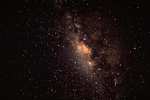There are theories that say neutrinos—shy, lightweight fundamental particles—may provide the key to understanding dark matter. So a group of researchers—including some from the Wisconsin IceCube Particle Astrophysics Center (WIPAC), a research center of the University of Wisconsin–Madison—compiled and contextualized two decades of neutrino data looking for a connection to dark matter. They present a comprehensive set of limits on dark matter annihilation to neutrino pairs in a paper available on the preprint server arXiv.
DM-Ice, or Dark Matter-Ice, is searching for dark matter in the Southern Hemisphere. In celebration of Dark Matter Day, celebrated internationally every year on October 31, we speak to Matt Kauer, an assistant researcher on DM-Ice who is stationed at WIPAC.
the COSINE Collaboration today presents the first results that significantly challenge DAMA’s claim of a dark matter observation. The paper, published this week in Nature, does not reveal any excess of interactions that could be attributed to dark matter.








